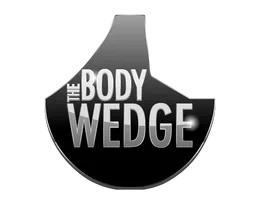Understanding Myofascial Trigger Points
The term "myofascial" refers to muscle tissue (myo) and the connective tissue around it (fascia). Myofascial pain often arises from muscle injury or repetitive strain, leading to the formation of trigger points—contracted knots within the muscle that cause pain and tightness.
Myofascial trigger points are a common cause of pain. These points are painful when pressed, cause muscle fiber shortening, and have a unique property called referred pain, where pain is felt in areas other than the trigger point.
How Trigger Points Cause Pain
For example, a trigger point in the trapezius muscle at the top of your shoulder can refer pain up the side of your neck and head, causing a headache. Active myofascial trigger points in the shoulder, neck, and face muscles are often sources of headaches, including tension headaches and even migraines.
Common Locations and Causes of Trigger Points
Muscles make up a significant portion of our body weight and play a crucial role in our health. When muscles are in good condition, they allow us to perform daily activities easily. However, when muscles develop trigger points, we experience pain, stiffness, and limited function.
Factors that can lead to trigger point formation include:
- Poor posture
- Repetitive mechanical stress
- Muscle imbalances (e.g., leg length inequality)
- Joint disorders
- Non-restorative sleep
- Vitamin deficiencies
Diagnosing Myofascial Pain Syndrome
Myofascial Pain Syndrome (MPS) or Chronic Myofascial Pain means that the primary source of your symptoms is myofascial trigger points. These points may also cause pain attributed to conditions like arthritis or bulging discs, often being referred to as "the great mimickers."
Common diagnoses associated with myofascial trigger points include:
- Back pain
- Headaches
- Neck pain
- Shoulder pain (Rotator Cuff)
- Jaw pain (TMJD)
- Tennis elbow
- Carpal tunnel syndrome
- Repetitive Strain Injuries
- Pelvic pain
- Sciatica
- Plantar fasciitis
- Tendinitis
- Bursitis
- Arthritis
- Fibromyalgia
The Challenge of Treating Muscle Pain
Muscle pain from trigger points is often overlooked in traditional medical treatment. Despite the prevalence of specialized fields in medicine, muscle pain remains an under-treated area. Many patients are still treated with anti-inflammatory medications, muscle relaxants, and strengthening programs, which may not effectively address trigger points.
Active vs. Latent Trigger Points
Trigger points can be active or latent. Active trigger points cause pain and weakness, while latent trigger points restrict movement and muscle function without causing pain unless pressed. Latent trigger points can persist for years and become active due to muscle overload, stress, or injury.
How Many Trigger Points Can You Have?
The number of trigger points can vary. Often, individuals have multiple trigger points, especially if they have had prolonged pain. A skilled practitioner can diagnose myofascial trigger points through palpation, as no standard lab tests or imaging can confirm their presence.
Treating Myofascial Pain with Trigger Point Therapy
Treating trigger points involves unlocking the muscle's contraction mechanism. Techniques include:
- Trigger Point Pressure Release: Applying pressure to the trigger point until it releases.
- Spray and Stretch: Using a vapor-coolant spray to distract the muscle and allow a complete stretch.
- Movement and Stretching: After release, the muscle needs to be moved through its full range of motion.
What to Expect from Treatment
Many patients experience pain relief during the first treatment, though soreness may occur for a day or two. Some may feel fatigue or increased energy as muscles return to normal function. Adhering to a self-care program is crucial for long-term relief.
Factors Influencing Improvement
Your rate of improvement depends on various factors, including:
- Type and duration of injury
- Overall health and fitness
- Presence of perpetuating factors
- Nutritional status
- Quality of sleep
- Mental health
- Compliance with self-care
Comprehensive Care
A thorough treatment plan should include:
- Medical and pain history assessment
- Evaluation of pain patterns
- Ergonomic assessment
- Sleep quality improvement
- Nutritional recommendations
- Exercise and movement programs
- Self-treatment and management strategies
By addressing these areas, you can effectively manage myofascial pain and improve your quality of life.

